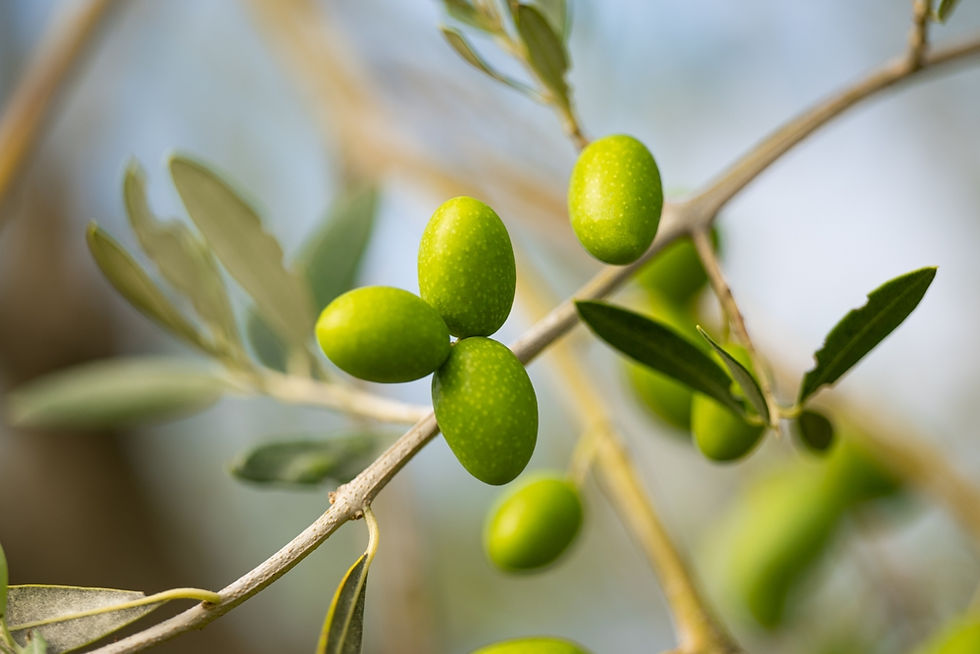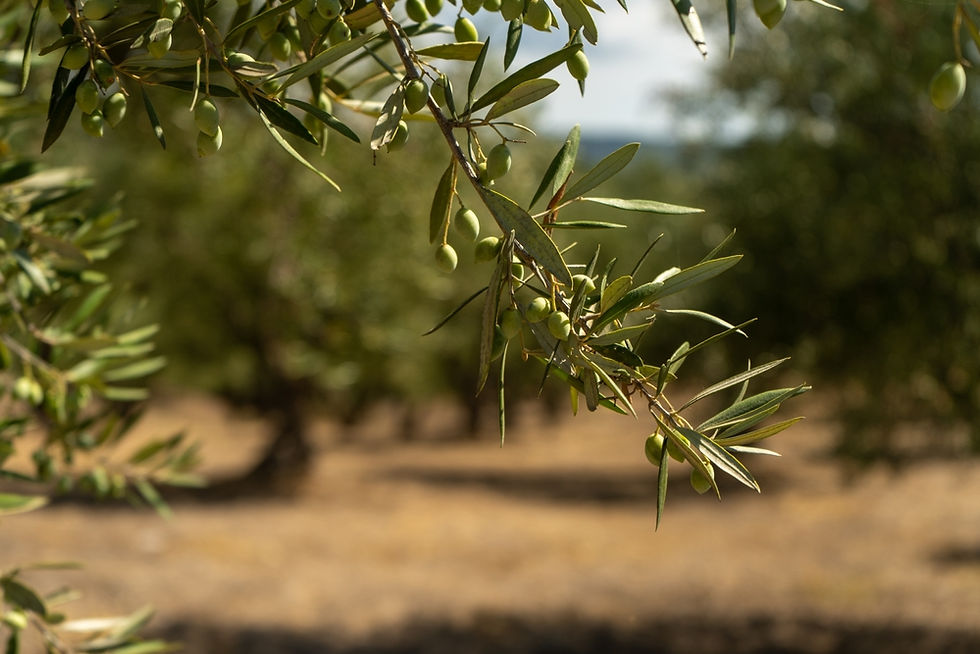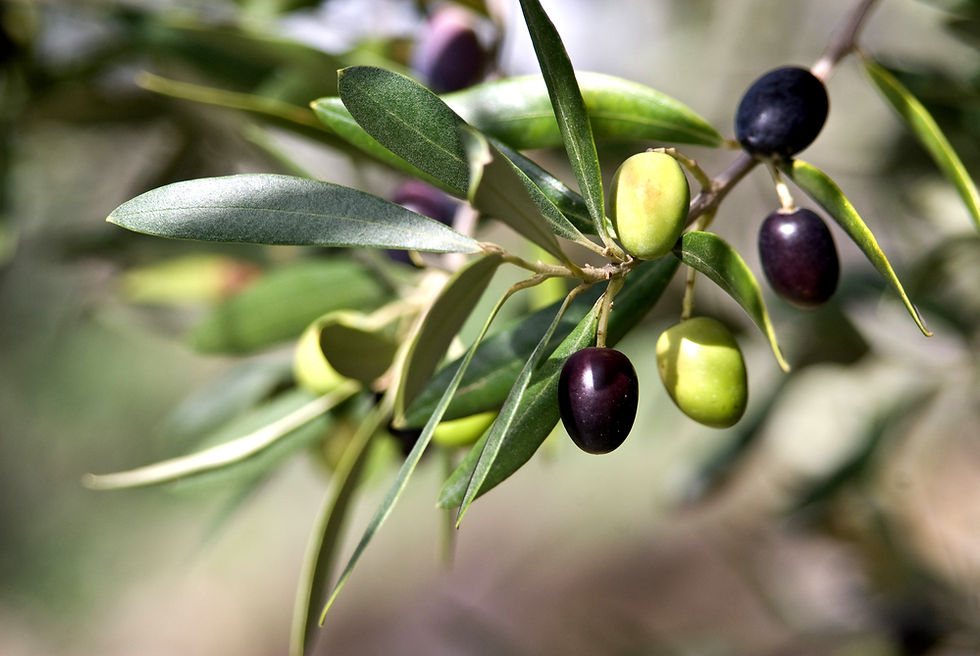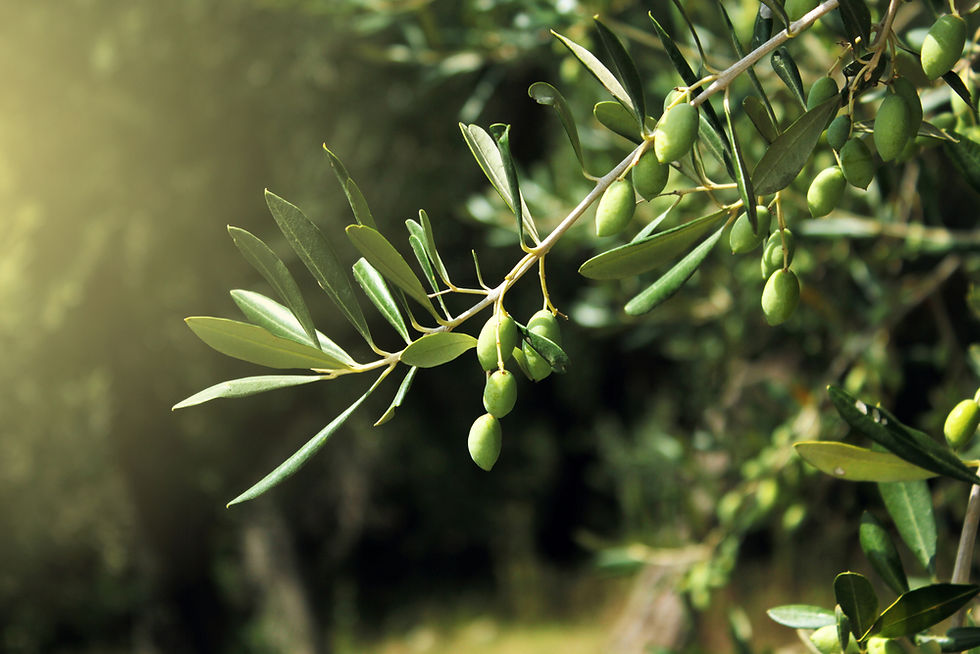Get Stuffed, Supermarket Olives
- Katherine Wilson
- Jun 25
- 4 min read
Updated: Jun 25
In Melbourne, olives are the street kids of forageable trees. Shout out to all the post-WWII Italian and Greek migrants who planted them along the nature strip. Melbourne’s olive streets have been established since the 1950s.

Urban olive foraging = honouring legacy plantings + sustainable food.
Don’t pick from busy roads—you wanna stick to the backstreets. Car exhaust is not your friend; it tastes like cancer and is just as unhealthy. So go on a little adventure to find the lonely laneways.

Late autumn is prime olive season. Harvest them once they’ve turned black, or when green olives have a gentle give when pinched (leave them if they’re too firm). There are many varieties, but every olive begins green and ripens to black.

Olive trees are a cinch to identify. Olives on the branches (real genius moment there), plus thin sage-green leaves with a pale underside. Pale trunks, often a bit gnarly or twisted-looking.
The nature strip is fair game, but I usually take only half the fruit. Gotta leave some for the nonnas.

I pick what’s in reach first. If it’s a tall tree, I throw down a tablecloth and whack the upper branches with my trusty walking stick (take that, able-bodied peasants). For the non-cripples, you’ll need to bring a rake. I look like some kind of chaotic fruit witch, which honestly is my vibe.

If you’re feeling adventurous, you can brew tea from the leaves. Some varieties are medicinal, great for balancing blood sugar and lowering cholesterol.

You can also use olive branches for making wreaths, smoking meat, or giving your home that rustic ‘I make my own feta and hex my exes’ aesthetic.

Some olive varieties are better for eating, while others are best suited for pressing into olive oil. To find out what type you have, put a few photos of the tree, leaves, and olives in a plant identification group. Once you know the species, a quick search online will tell you whether your olives are meant for snacking or pressing.

Olives have the most oil content once they turn black, but they aren’t ideal for oil once very ripe.
If you want to make olive oil, don’t bother doing this solo—it’s complicated and frustrating; you’ll be toying with a mental breakdown. If your local council happens to be run by eco-conscious urban hippies (bless their green hearts), they might just offer a free program that turns your olives into oil. Take a peek at CERES’ Olives to Oil initiative.

Use your olive oil in cooking, preserving herbs, handmade soap (made from water + lye + olive oil), or hair oil (dried rosemary + olive oil).

If your olives are better suited for eating, no, you can’t eat them straight off the tree. They're extremely bitter. There's a simple process to follow.

I ain’t no Greek yiayia, so take my instructions with a grain of salt. There are better processes, there are simpler processes. But this is what I’ve tried and tested:
1) Wash your olives and remove stems. Toss any with bumps, bruises, or suspicious holes.
2) If you’ve got big chonky olives, crush them with a rolling pin. Don’t bother with smaller olives.
3) Pack olives in a jar with 1 tbsp additive-free salt (no weird anti-caking stuff). Cover with tap water, then float lemon slices on top so olives aren’t exposed directly to air.
4) Daily refresh: For two weeks, swap the water, salt, and lemon each day. Leave the jar smack-bang in the middle of the bench so you don’t forget.
5) After the fortnight, switch to filtered water (chlorine-free) with 10% salt by weight. Stash in a dark spot for at least three months, changing the brine monthly.

Troubleshooting: A few bubbles are normal. But if there’s any mould or a funky stink, you failed—better luck next season. If unsure, rinse and refresh the brine.
This method creates fruity-tasting olives—much better than the jarred olives in the shops!
There are lots of alternative methods, and different methods are better suited for different olive varieties.

There’s an infinite number of variations of the brine cure. Some people add citric acid instead of lemon. There’s an unsalted water cure. Some people use vinegar. There’s a dry salt cure. If you live by the sea like a Sicilian, you can use a seawater method. Wannabe chemists might consider a lye cure or a lye ferment. You can even add herbs and spices when brining.
However you make them, you can add a second step afterwards and marinate them. This turns them into a dinner-party-worthy snack:

To marinate, use enough olive oil to cover all your olives, then add whatever herbs and spices you want: garlic, rosemary, thyme, oregano, parsley, lemon rind, bay leaf, peppercorns, chilli—you get the picture. If you want, add some chonky pieces of feta or a splash of red wine vinegar. Leave to marinate for a day or two. Once marinated, they’ll last in the fridge for two weeks.

So next time you’re wandering your neighbourhood, keep your eyes peeled while doing a little backstreet scavenger hunt. Fill your pockets with a surprise harvest. My poor husband has learned to expect his pockets to be crammed with wild goodies whenever we go for a walk.




Comments